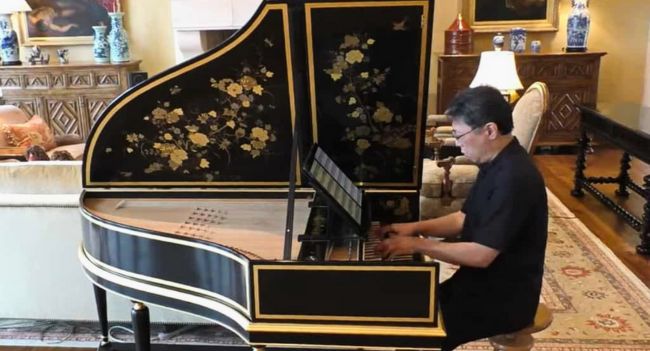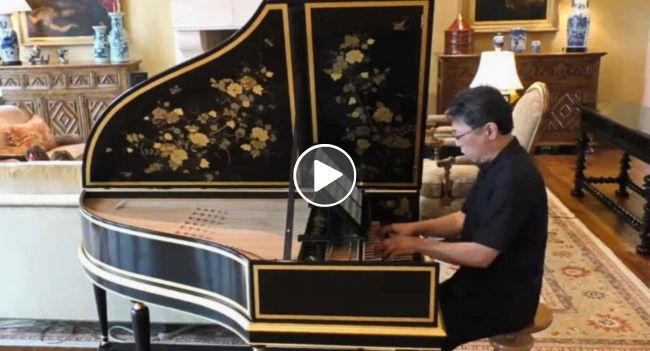
If you want to hear the music of Johann Sebastian Bach played on the instruments that actually existed during the stretch of the 17th and 18th centuries in which he lived, there are ensembles specializing in just that. But a full musical revival isn’t quite as simple as that: while there are baroque cellos, oboes, and violas around, not every instrument that Bach knew, played, and composed for has survived. Take the lautenwerck, a category of “gut-stringed instruments that resemble the harpsichord and imitate the delicate soft timbre of the lute,” according to Baroquemusic.org. Of the “lute-harpsichord” craftsmen in 18th-century Germany remembered by history, one name stands out: Johann Nicolaus Bach.
A second cousin of Johann Sebastian, he “built several types of lute-harpsichord. The basic type closely resembled a small, wing-shaped, one-manual harpsichord of the usual kind. It only had a single (gut-stringed) stop, but this sounded like a pair of strings tuned an octave apart in the lower third of the compass and in unison in the middle third, to approximate as far as possible the impression given by a lute. The instrument had no metal strings at all.”
This gave the lautenwerck a distinctive sound, quite unlike the harpsichord as we know it today. You can hear it—or rather, a reconstructed example—played in the video above, a short performance of Bach’s Prelude, Fugue, and Allegro in E‑flat, BWV 998 by early-music specialist Dongsok Shin.
“If he owned two of them, they couldn’t have been that off the wall,” Shin says of the composer and his relationship to this now little-known instrument in a recent NPR segment. “The gut has a different kind of ring. It’s not as bright. The lautenwerck can pull certain heartstrings.” Just as the sound of each lautenwerck must have had its own distinctive characteristics in Bach’s day, so does each attempt to recreate it today. “The small handful of artisans currently making lautenwerks are basically forensic musicologists,” notes NPR correspondent Neda Ulaby, “reconstructing instruments based on research and what they think lautenwerks probably sounded like.” As for the one man we can be sure knew them intimately enough to tell the difference, he’d be turning 336 years old right about now.
